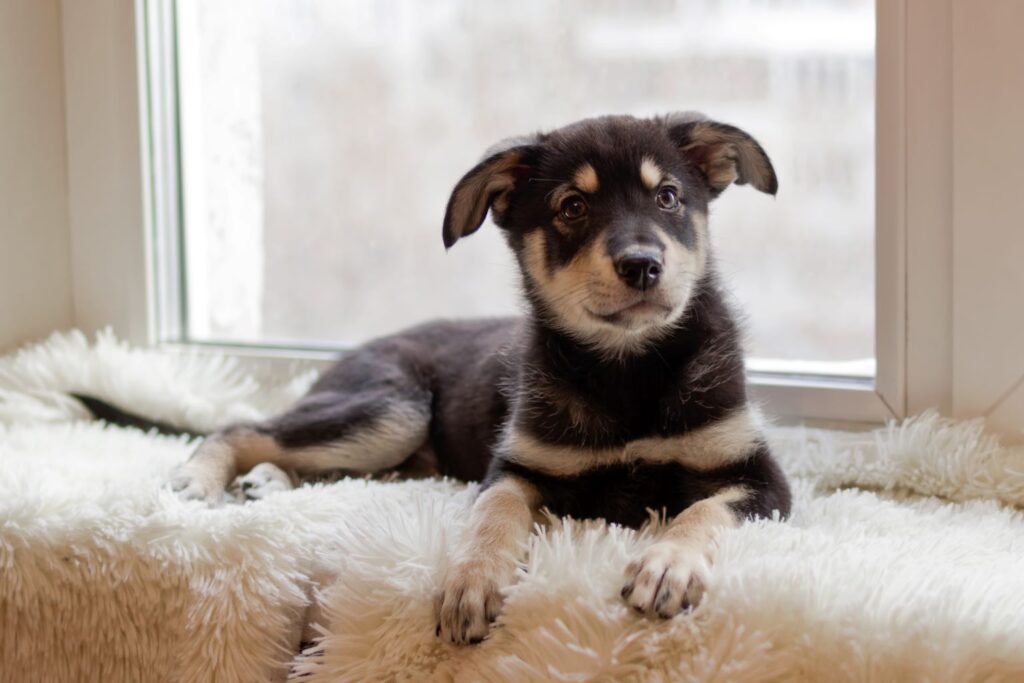Bringing a new puppy into your home is an exciting and joyful experience. However, it also requires careful preparation to ensure that your new furry friend has a safe and comfortable environment to thrive in. Here’s a comprehensive guide on how to prepare for your new puppy, covering everything from setting up a safe environment to gathering essential supplies and preparing mentally and emotionally.

Setting Up a Safe Environment
Puppy-Proof Your Home
Before your puppy arrives, it’s essential to puppy-proof your home to prevent accidents and injuries. Here’s how:
- Secure Hazardous Items: Move cleaning supplies, chemicals, and medications out of reach. Puppies are curious and may chew on or ingest harmful substances.
- Hide Electrical Cords: Puppies might chew on cords, which can be dangerous. Use cord protectors or hide cords behind furniture.
- Remove Small Objects: Items like coins, small toys, and jewelry can be choking hazards. Keep them out of your puppy’s reach.
- Block Off Unsafe Areas: Use baby gates to block off areas that are unsafe or where you don’t want your puppy to go.
Create a Safe Space
Designate a specific area in your home where your puppy can feel secure. This space should include:
- A Comfortable Bed: Choose a soft, durable bed that your puppy can snuggle into.
- Toys and Chews: Provide a variety of toys and chew items to keep your puppy entertained and to help with teething.
- Food and Water Bowls: Place sturdy, non-tip bowls in a quiet area where your puppy can eat and drink comfortably.
Gathering Essential Supplies
Having the right supplies on hand will make your puppy’s transition to your home smoother. Here’s a checklist of essentials:
- Crate: A crate is useful for training and provides a safe space for your puppy to rest.
- Leash and Collar: Ensure the collar fits properly and that you have a sturdy leash for walks.
- Puppy Food: Choose high-quality puppy food that meets your puppy’s nutritional needs. Consult your vet for recommendations.
- Training Pads: These are useful for house training, especially in the early days.
- Grooming Supplies: Brush, shampoo, nail clippers, and other grooming tools are necessary for keeping your puppy clean and healthy.

Crate Training Your Puppy
Crate training can be highly beneficial for both you and your puppy. It helps with house training, provides a safe space, and can prevent destructive behavior when you’re not around.
How to Crate Train
- Introduce the Crate: Place the crate in a busy area of your home and let your puppy explore it. Put soft bedding and a few toys inside to make it inviting.
- Encourage Entry: Use treats and praise to encourage your puppy to enter the crate. Start by feeding them meals near the crate, then gradually move the food inside.
- Short Stays: Begin with short periods of crate time. Gradually increase the duration as your puppy becomes more comfortable.
- Use the Crate for Naps and Bedtime: Encourage your puppy to nap in the crate during the day and sleep in it at night. This helps establish a routine.
Establishing a Routine
Puppies thrive on routine. Establishing a consistent schedule helps your puppy understand what to expect and reduces anxiety.
Feeding Schedule
Feed your puppy at the same times every day. This helps regulate their digestive system and makes house training easier. Puppies typically need to be fed three to four times a day.
Potty Training Schedule
Take your puppy outside frequently, especially after eating, drinking, playing, and waking up. Establish a designated potty spot and use a consistent command like “go potty.” Praise and reward your puppy immediately after they go.
Play and Exercise
Puppies have a lot of energy and need regular play and exercise. Schedule play sessions and walks at the same times each day. This helps burn off energy and keeps your puppy healthy and happy.
Preparing Mentally and Emotionally
Bringing a puppy into your home is a big commitment. It’s essential to prepare yourself mentally and emotionally for the changes ahead.
Patience and Understanding
Puppies are like toddlers—they’re learning and exploring their new world. Be patient with accidents and misbehavior. Consistent training and positive reinforcement will help them learn.
Bonding Time
Spend quality time with your puppy to build a strong bond. Play, cuddle, and train together. This not only strengthens your relationship but also helps your puppy feel secure and loved.
Prepare for Challenges
Understand that there will be challenges along the way, from sleepless nights to chewed-up shoes. Stay positive and seek support from friends, family, or puppy training classes if needed.

Conclusion
Preparing for a new puppy involves setting up a safe environment, gathering essential supplies, crate training, establishing a routine, and preparing mentally and emotionally. By taking these steps, you’ll create a welcoming and nurturing home for your new furry friend. Remember, patience and consistency are key to successful puppy training and integration. Enjoy the journey with your new puppy and the joy they bring to your life!
